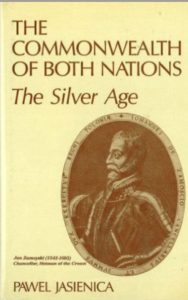 by Pawel Jasienica
by Pawel Jasienica
Translated by Alexander Jordan
The third volume, translated by Alexander Jordan especially for the American Institute of Polish Culture – as were the preceding ones, Piast Poland and Jagiellonian – was published by the Institute and is called “The Commonwealth of Both Nations,” because Poland and Lithuania entered in 1569 the Union of Lublin, which made them a federation.
The largest state in Europe at the time, it faced many problems, among them the choice of a monarch. With the original dynasties extinct, the throne became elective, but the election of a Polish or Lithuanian would have offended the principle of the equality of the partners. Consequently foreign princes competed in elections to the throne. There was nothing unique about that – after all, the present royal house of England is that of German Hanover, renamed Windsor during World War I.
The “Commonwealth of Both Nations” deals with a turbulent period between 1572 and 1648, during which a Hungarian, a Frenchman and a Swedish dynasty ruled the country. It is an enthralling tale of wars with Muscovy, the Habsburgs, Sweden, Turkey and the Tartars, with the Cossacks playing a colorful role.
Jasienica is no academician and his book has no footnotes. It is a spellbinding tale of high intrigue and war, of the Polish army holding the Kremlin of Moscow and Polish sailors fighting a naval battle against the Swedes, a Cossack fleet in the Black Sea attacking Istanbul and countless other fascinating events. It reads almost like a novel, but it is all historical fact, the saga of a nation.







